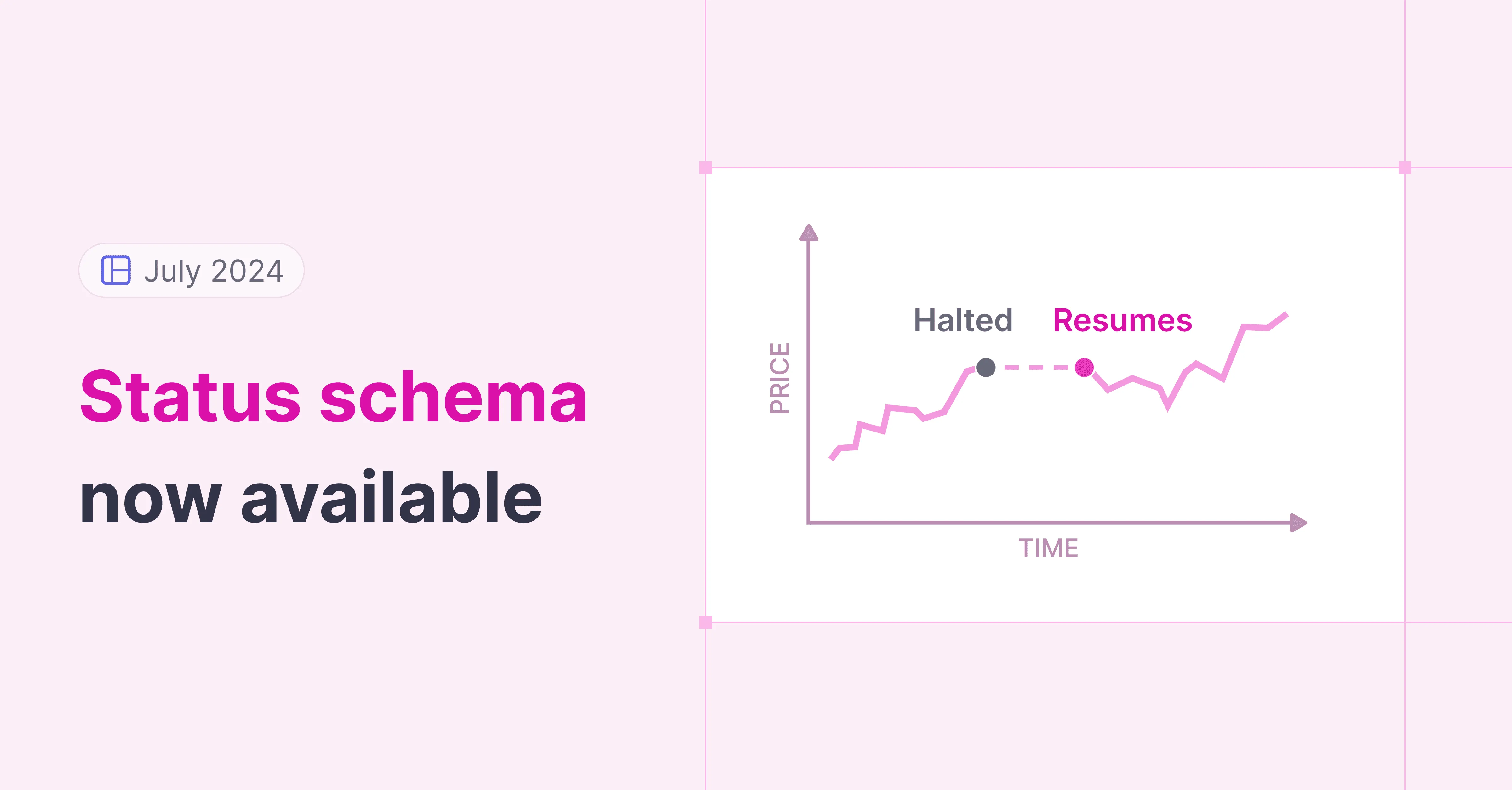Status schema now available for CME and DBEQ data
July 12, 2024

We're excited to announce the release of our status schema, which provides information about the trading session and each instrument, such as halts, pauses, short-selling restrictions, auction starts, and other matching engine statuses.
Updated September 2024: The status schema was first introduced for real-time and historical CME data in July 2024. It's now available for real-time and historical Databento Equities Basic data, with plans to roll out support for all remaining datasets in the coming months.
There are many use cases for the status schema, including:
- Handling halts and auctions. Prior to this release, the bid-ask spread could become inverted during a trading session during a halt or auction event, accurately reflecting auction dynamics. However, since there was no way to identify that an instrument's trading was halted, it could give the misconception that the data was faulty.
- Trading calendar and systematic handling of session start and end times. While Databento doesn't currently provide an API for the trading calendar, status messages can be used to systematically identify session start and end times for every instrument.
- Event-based trading strategies. Databento's normalized status data makes it much easier to explore trading strategies that exploit mispricings around trading halts, rare events, and infrequent forms of market dislocations.
This example demonstrates how to request status data with our Python client library. Pricing starts at $4.00/GB, and status fields can be found in our documentation.
import databento as db
client = db.Historical()
data = client.timeseries.get_range(
dataset="GLBX.MDP3",
symbols="NQ.FUT",
stype_in="parent",
schema="status",
start="2023-06-07T00:00:00",
end="2023-06-08T00:00:00",
)
for record in data:
print(record)